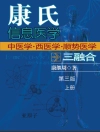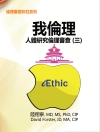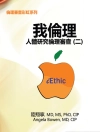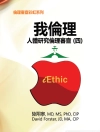With its focus on concrete methods and recent advances in applying nanotechnology to develop new drug therapies and medical diagnostics, this book provides an overall picture of the field, from the fundamentals of nanopharmacy with the characterisation and manufacturing methods to the role of nanoparticles and substances. Actual examples of utilization include drug development issues, translation to the clinic, market prospects, and industrial commercialization aspects. The applications described are taken from cancer treatment as well as other major therapeutic areas, such as infectious diseases and dermatology. An in-depth discussion on safety, regulatory, and societal aspects rounds off the book.
Written by a top team of editors and authors composed of the leading experts in Europe and the USA who have pioneered the field of nanopharmacy!
Tabella dei contenuti
Foreword XXVII
Industrial Requirement on Nanopharmacy Research XXIX
Introduction XXXI
Volume 1
Part One Entry to the Nanopharmacy Revolution 1
1 History: Potential, Challenges, and Future Development in Nanopharmaceutical Research and Industry 3
Albertina Ariën and Paul Stoffels
1.1 Nanopharmaceuticals in Cancer Therapy 4
1.2 Nanoparticles Actively Using the Host Machinery 5
1.3 Nanopharmaceuticals for Oral Administration and Long-Acting Injectable Therapy 8
1.4 Bridging Future Nanomedicines to Commercialization 10
1.5 Future Outlook 11
Acknowledgments 12
References 12
2 Nanoscale Drugs: A Key to Revolutionary Progress in Pharmacy and Healthcare 17
Simon Sebastian Raesch, Marina Poettler, Christoph Alexiou, and Claus-Michael Lehr
2.1 Introduction 17
2.2 Nanopharmacy Concepts to Improve the Safety and Efficacy of Medicines 20
2.3 Technical Realization of Nanopharmaceuticals 30
2.4 Safety of Nanopharmaceuticals 34
2.5 Present and Future of Nanopharmacy 35
References 37
3 The Emergence of Nanopharmacy: From Biology to Nanotechnology and Drug Molecules to Nanodrugs 43
Marilena Hadjidemetriou, Zahraa Al-Ahmady, Mariarosa Mazza, and Kostas Kostarelos
3.1 Introduction 43
3.2 First Generation of Nanopharmaceuticals: From Drug Molecules to Nanodrugs 45
3.3 Conclusion 55
References 56
4 Understanding and Characterizing Functional Properties of Nanoparticles 63
Ester Polo, Valentina Castagnola, and Kenneth A. Dawson
4.1 Introduction 63
4.2 The Approach to Characterization 70
References 77
5 Omics-Based Nanopharmacy: Powerful Tools Toward Precision Medicine 81
Daniel Rosenblum and Dan Peer
5.1 Introduction 81
5.2 Precision Medicine 82
5.3 “OMICS” – New Era in Understanding Pathology 86
5.4 Nanomedicine 90
5.5 Future Outlook 93
Acknowledgments 96
References 96
Part Two Fundamentals of Nanotechnology in Pharmacy 101
6 Nanostructures in Drug Delivery 103
Salma Nabil Tammam and Alf Lamprecht
6.1 Introduction 103
6.2 Nanocarrier Classification 103
6.2.1 Inorganic Nanostructures 104
6.3 Drug Loading and Release 116
6.4 General Discussion and Conclusions 123
References 124
7 Characterization Methods: Physical and Chemical Characterization Techniques 135
Sven Even F. Borgos
7.1 The Need for Nanomedicine-Specific Characterization 135
7.2 The Assay Cascade: From Basic Properties to Complex Interactions 136
7.3 Physicochemical Characterization of Pristine Nanoparticles 137
7.4 Characterization of Nanoparticles in the Biological Environment 144
7.5 Conclusions and Future Outlook 149
References 150
8 Nanoparticle Characterization Methods: Applications of Synchrotron and Neutron Radiation 157
Martha Brennich, Marité Cardenas, Hiram Castillo-Michel, Marine Cotte, V. Trevor Forsyth, Michael Haertlein, Simon A. J. Kimber, Geraldine Le Duc, Edward P. Mitchell, Adam Round, Murielle Salome, and Michael Sztucki
8.1 Advanced Characterization: Synchrotron Light and Neutron Sources 157
8.2 Application Examples 159
8.3 Going Beyond Characterization Using Synchrotron X-rays: Nanoparticles for Diagnostic and Therapeutic pproaches 168
8.4 Looking Ahead and Conclusions 169
Acknowledgments 170
References 171
9 Overview of Techniques and Description of Established Processes 175
Jan Henrik Finke, Michael Juhnke, Arno Kwade, and Heike Bunjes
9.1 Introduction 175
9.2 Processing of Liquid Drug Carrier Formulations 176
9.3 Drug Nanoparticles and Process Chains to Solid Formulations 192
9.4 Industrial Status and Framework 215
9.5 Perspectives for Academia, Industry, and Regulatory Authorities 216
References 217
10 Nanopharmacy: Exploratory Methods for Polymeric Materials 231
Kuldeep Bansal, Luana Sasso, Hiteshri Makwana, Sahar Awwad, Steve Brocchini, and Cameron Alexander
10.1 Introduction 231
10.2 Rationale for the Use of Polymers in Nanomedicines 232
10.3 Polymer Structures and Properties 234
10.4 Formulation of Copolymers into Micelles, Vesicles, and Nanoparticles 236
10.5 Conjugation of Polymers to Drugs and Proteins 240
10.6 Recent Advances in Polymer Synthesis for Therapeutic Applications 248
10.7 Controlled Radical Polymerization (CRP) 259
10.8 Concluding Remarks 260
References 261
11 Overview and Presentation of Exploratory Methods for Manufacturing Nanoparticles/“Inorganic Materials” 271
Xavier Le Guevel
11.1 Introduction 271
11.2 Gold NPs 272
11.3 Magnetic NPs 279
11.4 Metal Oxide NPs 282
11.5 Others (Silver, Quantum Dots, and Lanthanides) 284
11.6 Conclusion and Perspective 285
Acknowledgment 285
References 285
12 Scale-Up and c GMP Manufacturing of Nanodrug Delivery Systems for Clinical Investigations 295
Mostafa Nakach and Jean-René Authelin
12.1 Introduction 295
12.2 Presentation of Major Manufacturing Processes of Different Nanodrug Delivery Systems 296
12.3 Nanodrug Delivery Systems as Marketed Products 302
12.4 Particle/Vesicle Size Reduction Technologies 302
12.5 Process Development and Scale-Down/Scale-Up Strategy 308
12.6 Technological Concept for Manufacture of Drug Product for Human Use (GMP Unit) 322
12.7 Conclusion 327
References 327
13 Occupational Safety and Health 331
Thomas H. Brock
13.1 Nanomaterials at the Workplace 331
13.2 Legal Aspects 335
13.3 Management of Uncertainty 336
13.4 Risks of Nanomaterials for Researchers and Workers 336
13.5 Prudent Practices and Proven Concepts for Controlling Risks 338
13.6 Instruction and Training 351
13.7 Summary 352
References 352
Volume 2
Part Three Development of Nanopharmaceuticals 355
14 Micro- and Nano-Tools in Drug Discovery 357
Andreas Dietzel, Monika Leester-Schädel, and Stephan Reichl
14.1 Introduction 357
14.2 General Concepts of Miniaturization 357
14.3 Micro- and Nanofabrication 359
14.4 Nanoformulation 367
14.5 Organ-on-a-Chip 372
References 375
15 Computational Predictive Models for Nanomedicine 379
Marco Siccardi, Alessandro Schipani, and Andrew Owen
15.1 Introduction 379
15.2 Molecular Modeling in Nanomedicine 381
15.3 Computational Approaches for Predicting Nanotoxicology 384
15.4 Simulation of Nanoparticle Pharmacokinetics 386
15.5 Conclusion 395
References 397
16 Drug Targeting in Nanomedicine and Nanopharmacy: A Systems Approach 403
Jingwei Shao, Lisa Mc Connachie, and Rodney J.Y. Ho
16.1 Introduction 403
16.2 A Systems Approach to Drug Delivery and Drug Targeting 405
16.3 Current Nanomedicine Products 407
16.4 Transformation of a Discovery of Disease Target to a Therapeutic Product 410
16.5 The Role of Targeted Nanoformulations and a Systems Approach in Drug Development 412
16.6 Targeting Drugs to Sites of Action 413
16.7 A Size-Dependent Targeting to Tissues and Cells 414
16.8 Ligand–Receptor-Based Targeting: Active Drug Targeting 417
16.9 Conclusions and Future Prospects 421
References 422
17 Nanoparticle Toxicity: General Overview and Insights Into Immunological Compatibility 425
Marina A. Dobrovolskaia
17.1 Introduction 425
17.2 Systemic Toxicity 427
17.3 Pulmonary Toxicity 428
17.4 Cutaneous Toxicity 431
17.5 Immunotoxicity 432
17.6 Unintended Presence of Nanosized Materials in Pharmaceutical Formulations 434
17.7 Conclusion 435
Acknowledgments 435
References 436
18 An Overview of Nanoparticle Biocompatibility for Their Use in Nanomedicine 443
Matthew S.P. Boyles, Leagh G. Powell, Ali Kermanizadeh, Helinor J. Johnston, Barbara Rothen-Rutishauser, Vicki Stone, and Martin J.D. Clift
18.1 Introduction 443
18.2 Nanomedicine 444
18.3 Biocompatibility of Nanoparticles for Medical Application 445
18.4 Summary 458
References 459
19 Translation to the Clinic: Preclinical and Clinical Pharmacology Studies of Nanoparticles – The Translational Challenge 469
Rachel Tyson, Leah Osae, Andrew J. Madden, and Andrew T. Lucas, and William C. Zamboni
19.1 Introduction 469
19.2 Nanoparticle Formulations 469
19.3 Pharmacokinetic Characterization 470
19.4 Mononuclear Phagocyte System 470
19.5 Delivery of CMA in Tumor 472
19.6 Methods to Target Brain Tumors 475
19.7 Physical Characteristics 477
19.8 The Effect of MPS on CMA PK and PD 480
19.9 Age 483
19.10 Gender 486
19.11 Tissue and Organ Effects 487
19.12 Drug–Drug Interactions 488
19.13 Prior Treatment 489
19.14 Translational Challenges 490
19.15 Future Perspectives on PK and PD 491
References 492
20 Regulatory Issues in Nanomedicines 497
Marisa Papaluca, Falk Ehmann, Ruben Pita, and Dolores Hernan
20.1 Nanomedicines and the Pharmaceuticals Regulatory Framework in Europe 497
20.2 The European Medicines Agency and Nanomedicines 499
20.3 Is It Important to Define Nanomedicines? 501
20.4 Communicating About Nanomedicines 503
20.5 Liposomal Formulations: State of Play at the EMA 504
20.6 Nanosimilar Colloidal Intravenous Iron-Based Preparations 511
20.7 International Landscape and Convergence on Nanomedicines 514
20.8 Conclusions and Way Forward 517
References 518
21 Social Studies of Nanopharmaceutical Research 521
Michael Schillmeier
21.1 Engaging with Ethical, Legal, and Social Implications of Nanoresearch 521
21.2 Nanopharmacy and the “Culture of Promise” 522
21.3 From “Science Meets Society” to Translation as a Social Process 523
21.4 Metaphors and Nanopharmacy 525
21.5 Nanopharmacy and “Personalized Medicine” 526
21.6 Concluding Remarks 528
References 529
Part Four Pharmaceutical Applications of Nanomaterials 533
22 Nanoparticles for Imaging and Imaging Nanoparticles: State of the Art and Current Prospects 535
Thomas Maldiney and Nathalie Mignet
22.1 Introduction 535
22.2 Conception of Nanotechnologies for Imaging 536
22.3 In Vivo Nanoparticle Imaging to Gain Insight into Nanomedicine Biodistribution and Stability 544
22.4 Translational Interest of Nanoparticles for Medical Imaging 548
22.5 Conclusion 553
References 553
23 Nanoparticle-Based Physical Methods for Medical Treatments 561
Christine Ménager
23.1 Photothermal Therapy 561
23.2 Photodynamic Therapy 565
23.3 Magnetic Hyperthermia 567
23.4 Radiotherapy 571
23.5 Sonodynamic Therapy 572
23.6 Cryosurgery 573
23.7 Future Perspectives 574
References 575
24 Nanodrugs in Medicine and Healthcare: Oral Delivery 579
Alejandro Sosnik
24.1 General Aspects and Challenges of Oral Drug Delivery 579
24.2 Pure Drug Micronization as a Conceptual Preamble to More Complex Drug Delivery 580
24.3 Nanotechnology Platforms for Improved Oral Drug Delivery 581
24.4 Conclusive Remarks 591
Acknowledgments 591
References 591
25 Steroidal Nanodrugs Based on Pegylated Nanoliposomes Remote Loaded with Amphipathic Weak Acids Steroid Prodrugs as Anti-Inflammatory Agents 603
Keren Turjeman and Yechezkel Barenholz
25.1 A Short Relevant Background on Inflammatory and Autoimmune Diseases 603
25.2 Drug Delivery Systems (DDS) Based on Nanoparticles (NP) for the Treatment of Diseases That Involve Inflammation 605
25.3 Glucocorticosteroid as Anti-Inflammatory Agents 607
25.4 Steroidal Nanodrugs Based on Pegylated Nanoliposomes Remote Loaded with Amphipathic Weak Acids Steroid Prodrugs as Anti-Inflammatory Agents 609
25.5 Methods for Loading Drugs into Liposomes 610
25.6 Comparing Various Approaches Used for Formulating Liposomal GCs 612
25.7 The Use of Liposomes Loaded with Steroids as Anti-Inflammatory Agents: A Brief Historical Perspective 615
25.8 Lessons Learned from Experimental Animal Models of Diseases That Involve Inflammation 618
References 625
26 Nanodrugs in Medicine and Healthcare: Pulmonary, Nasal and Ophthalmic Routes, and Vaccination 633
Christel C. Müller-Goymann and Mukta Paranjpe
26.1 Introduction 633
26.2 Different Routes of Administration 634
26.3 Different Types of Nanoparticles for Different Routes of Administration 638
26.4 Manufacturing Processes of Nanoparticles 638
26.5 Different Diseases Targeted Via Nanoparticle-Based Drug Delivery Systems 640
26.6 Challenges Faced in Formulation Development of Nanoparticle-Based Systems 641
References 642
27 Neurodegenerative Diseases – Alzheimer’s Disease 649
Maria Gregori and Francesca Re
27.1 Introduction 649
27.2 Diagnosis 650
27.3 Therapy of Alzheimer’s Disease 653
References 656
Part Five The Nanopharmaceutical Market 661
28 A Practical Guide to Translating Nanomedical Products 663
Raj Bawa
28.1 From the Laboratory to the Clinic: Overcoming the Valley of Death 666
28.2 Irreproducible Preclinical Research: A Bottleneck for Translation? 673
28.3 Protecting Inventions via Patents: The Cornerstone of Translation 678
28.4 Terminology and Nomenclature: Lost in Translation 680
28.5 Gaps in Regulatory Guidance 682
28.6 Conclusions and Outlook 683
28.7 Disclosures and Conflict of Interest 694
References 694
29 Development and Commercialization of Nanocarrier-Based Drug Products 697
Marianne Ashford
29.1 Drivers for New Medicines 697
29.2 Current Marketed Nanomedicines 699
29.3 Developing Nanomedicines 705
29.4 Commercialization of Nanomedicines 722
29.5 Conclusions 732
References 732
30 Future Outlook of Nanopharmacy: Challenges and Opportunities 735
Dan Peer and Marcel Van de Voorde
30.1 Matching the NC’s Delivery Mode of Action (Mo A) to the Tumor Type 736
30.2 Nonpredictive Animal Models 737
30.3 The Lack of Reliable Techniques that can Efficiently Characterize NCs and Measure their Stability in the Human Body 737
30.4 The Challenge of Scaling Up NCs 738
References 740
Index 743
Circa l’autore
Jean Cornier is presently consultant to several companies in the areas of life science, new technologies and business development. He obtained his Ph D from the University of Caen, France, and a MSc degree in pharmaceutical medicine from the University of Duisburg-Essen, Germany. Since 1986 he has worked in the space industry as expert in Materials and Life Science research and projects, was participant in space commercialisation initiatives supported by the European and German space agencies as well as in several EU-funded projects in biotechnology and civil security research.
Professor Arno Kwade is Head of the Center of Pharmaceutical Engineering and of the Institute of Particle Technology at the Technical University Braunschweig, Germany. After his Ph D he worked nine years in industry as partner of a consulting firm for processing and handling of materials and as general manager of a medium-sized company active in materials processing. Professor Kwade is speaker of the European working party on comminution and classification and developed a course on nanomilling, taken by more than 1000 participants from different industries, among them many pharmaceutical companies.
Professor Andrew Owen holds a personal Chair in Molecular and Clinical Pharmacology at the University of Liverpool, UK. He is also affiliated to the MRC Centre for Drug Safety Science and the Wolfson Centre for Personalised Medicine. He is Chair of the British Society for Nanomedicine, is co-inventor of several patents related to nanomedicines and has contributed to over 150 publications and book chapters. He is co-founder of University commercial start-ups, a Fellow of the Royal Society of Biology, a Fellow of the British Pharmacological Society and member of the steering committee for the Academy of Pharmaceutical Sciences Nanomedicine Focus Group.
Marcel Van de Voorde has 40 years` experience in European Research Organisations including CERN-Geneva, European Commission, with 10 years at the Max Planck Institute in Stuttgart, Germany. For many years, he was involved in research and research strategies, policy and management, especially in European research institutions. He holds a Professorship at the University of Technology in Delft, the Netherlands, as well as multiple visiting professorships in Europe and worldwide. He holds a doctor honoris causa and various honorary Professorships.
He is senator of the European Academy for Sciences and Arts, in Salzburg and Fellow of the World Academy for Sciences. He is a Fellow of various scientific societies and has been decorated by the Belgian King. He has authored of multiple scientific and technical publications and co-edited multiple books in the field of nanoscience and nanotechnology.












